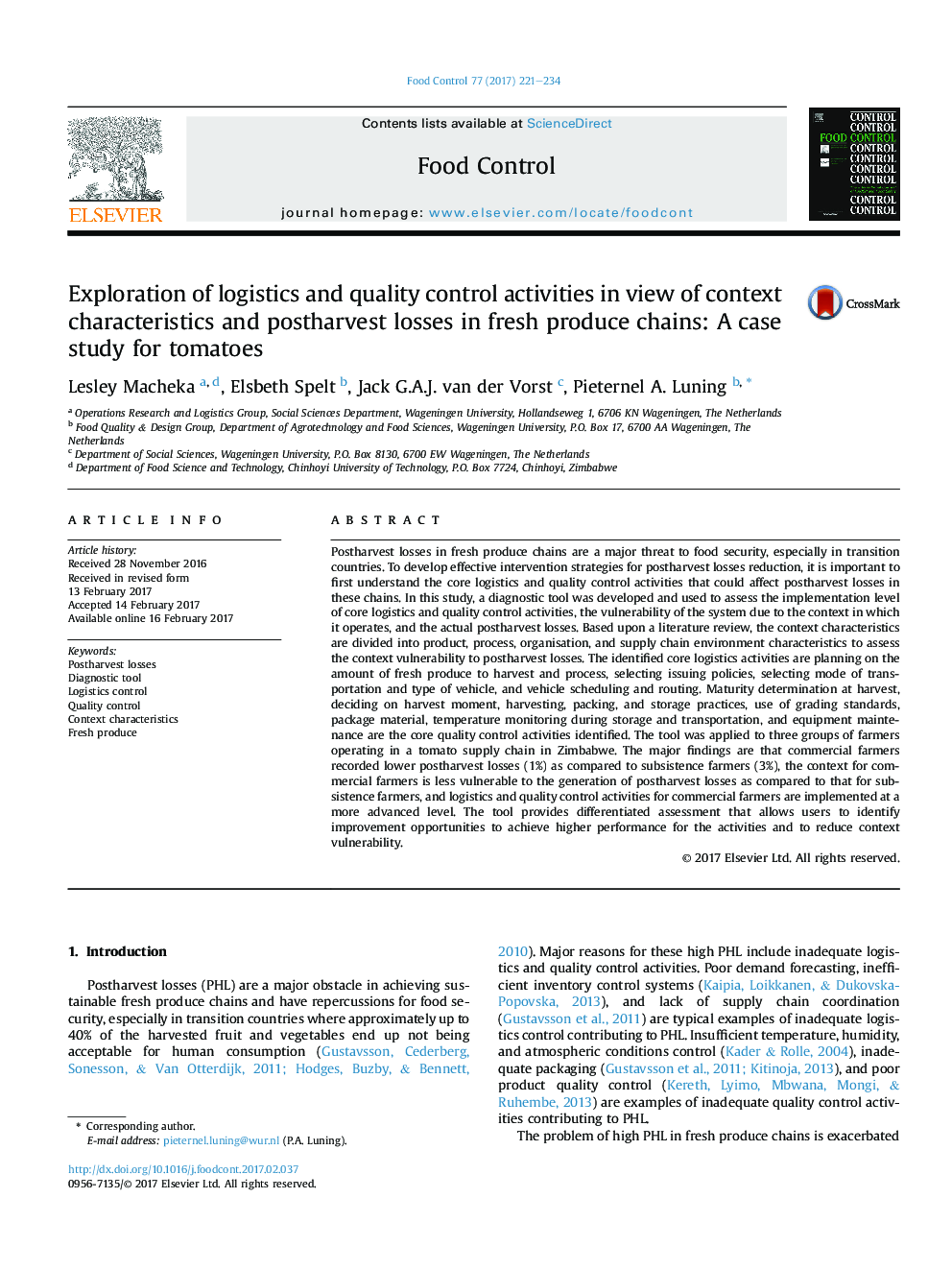| کد مقاله | کد نشریه | سال انتشار | مقاله انگلیسی | نسخه تمام متن |
|---|---|---|---|---|
| 5767573 | 1628387 | 2017 | 14 صفحه PDF | دانلود رایگان |
- A case study on postharvest losses conducted in tomato supply chains in Zimbabwe.
- Core logistics and quality control activities and context characteristics explored.
- Diagnostic tool developed to assess control activities and context characteristics.
- Commercial farmers recorded lower postharvest losses than subsistence farmers.
Postharvest losses in fresh produce chains are a major threat to food security, especially in transition countries. To develop effective intervention strategies for postharvest losses reduction, it is important to first understand the core logistics and quality control activities that could affect postharvest losses in these chains. In this study, a diagnostic tool was developed and used to assess the implementation level of core logistics and quality control activities, the vulnerability of the system due to the context in which it operates, and the actual postharvest losses. Based upon a literature review, the context characteristics are divided into product, process, organisation, and supply chain environment characteristics to assess the context vulnerability to postharvest losses. The identified core logistics activities are planning on the amount of fresh produce to harvest and process, selecting issuing policies, selecting mode of transportation and type of vehicle, and vehicle scheduling and routing. Maturity determination at harvest, deciding on harvest moment, harvesting, packing, and storage practices, use of grading standards, package material, temperature monitoring during storage and transportation, and equipment maintenance are the core quality control activities identified. The tool was applied to three groups of farmers operating in a tomato supply chain in Zimbabwe. The major findings are that commercial farmers recorded lower postharvest losses (1%) as compared to subsistence farmers (3%), the context for commercial farmers is less vulnerable to the generation of postharvest losses as compared to that for subsistence farmers, and logistics and quality control activities for commercial farmers are implemented at a more advanced level. The tool provides differentiated assessment that allows users to identify improvement opportunities to achieve higher performance for the activities and to reduce context vulnerability.
Journal: Food Control - Volume 77, July 2017, Pages 221-234
